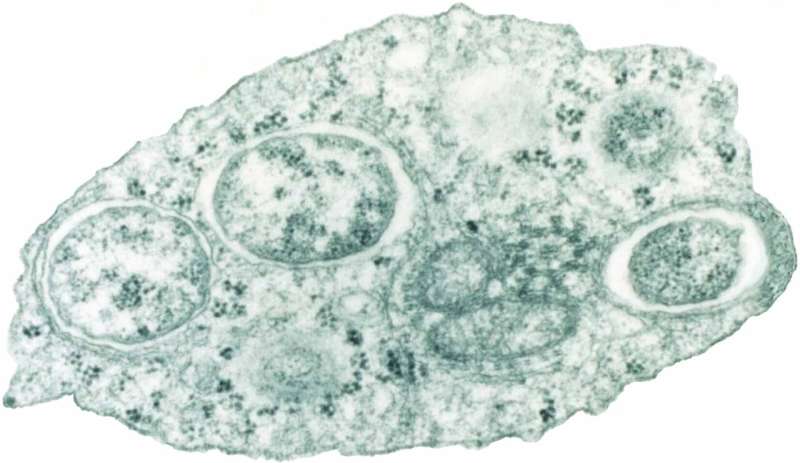March 15, 2019 report
A possible cure for river blindness and elephantiasis

An international team of researchers has found what might be a cure for river blindness and elephantiasis. In their paper published in the journal Science Translational Medicine, the group describes their search for a drug that could kill the parasitic worms behind the diseases, what they found, and how well it worked when tested with animals.
Parasites called filarial worms are responsible for causing the parasitic diseases onchocerciasis (river blindness) and lymphatic filariasis (elephantiasis), both diseases are relatively rare. Both tend to occur in poverty-stricken regions in Africa and are quite debilitating. One can lead to blindness, the other to serious skin deformations. Drugs are available that kill the worms during their larval stage, but until now, there were no known ways to kill the mature parasite.
For nearly a half-century scientists have unsuccessfully sought ways to kill filarial worms inside the body. They have found drugs that are able to slow the damage the worms cause, but patients must take them for years or decades. In recent years, researchers discovered that a type of beneficial symbiotic bacteria called Wolbachia infect the worms. Thus, killing the bacteria would indirectly kill the worms.
To that end, the researchers screened over 2,600 drugs looking for one that would prove fatal to Wolbachia. They found one called tylosin A. During initial testing of the drug in mice, the researchers found that it did not absorb into tissue very well. The team made modifications to the drug to overcome that problem. They began full testing of the drug in mice and gerbils—a two-week treatment regimen resulted in reduction of the worms by 90 percent. The team has begun testing the drug in rats and dogs, and reports that thus far, they have not seen any cardiovascular side-effects. They note that it is still too early to tell if the drugs will be effective in humans because the worms congregate in different body locations depending on the host.
More information: Mark J. Taylor et al. Preclinical development of an oral anti-Wolbachia macrolide drug for the treatment of lymphatic filariasis and onchocerciasis, Science Translational Medicine (2019). DOI: 10.1126/scitranslmed.aau2086
© 2019 Science X Network


















